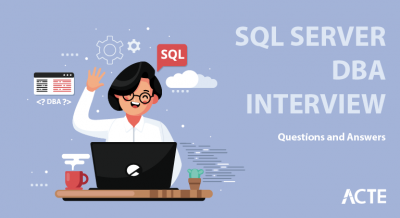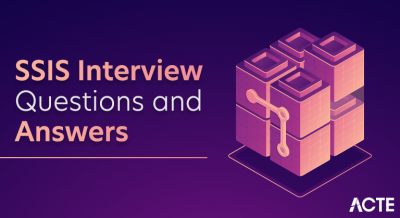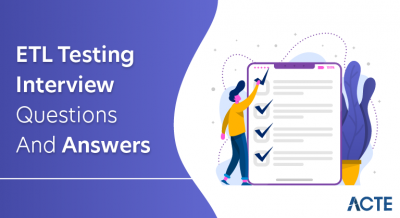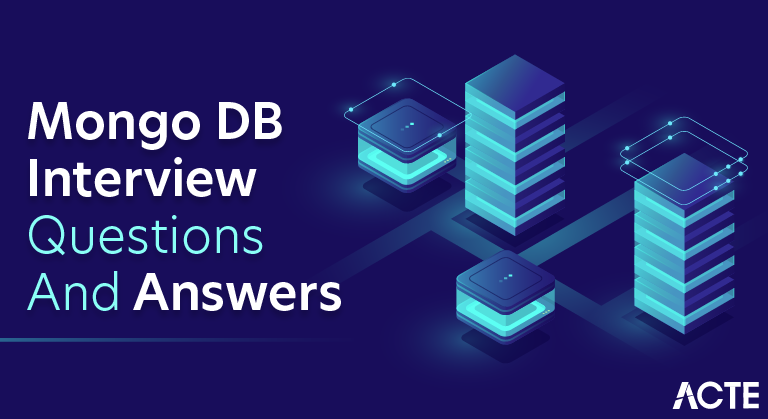
MongoDB is a popular open-source NoSQL database management system that falls under the category of a document-oriented database. It was developed by MongoDB Inc. and is designed to provide high performance, scalability, and flexibility for handling large amounts of data. MongoDB stores data in flexible, JSON-like BSON (Binary JSON) documents, making it easy to represent complex relationships and structures. The replication features of MongoDB, which are implemented using replica sets, offer high availability and fault tolerance. If one node fails, another may smoothly take over, ensuring ongoing service. /p>
1. What is MongoDB?
Ans:
MongoDB is an open-source NoSQL database written in the C++ language. It uses JSON-like documents with the optional schemas. It provides easy scalability and is a cross-platform, document-oriented database. It combines the ability to scale out with the features such as secondary indexes, range queries, sorting, aggregations, and geospatial indexes.
2. What are the advantages of MongoDB?
Ans:
- MongoDB supports the field, range-based, string pattern matching type queries.
- MongoDB support the primary and secondary index on any fields.
- MongoDB basically uses the JavaScript objects in place of procedures.
- MongoDB uses the dynamic database schema.
- MongoDB is easy to scale up or down.
3. What is Document in MongoDB?
Ans:
A Document in the MongoDB is an ordered set of keys with the associated values. It is represented by the map, hash, or dictionary. In JavaScript, documents are the represented as objects.
4. What is Collection in MongoDB?
Ans:
- A collection in the MongoDB is the group of documents. If a document is a MongoDB analog of a row in the relational database, then a collection can be thought of as the analog to the table.
- Documents within a single collection can have any number of the different “shapes”, i.e. collections have dynamic schemas.
5. What is Mongo Shell?
Ans:
It is the JavaScript shell that allows interaction with the MongoDB instance from the command line. With that one can perform administrative functions, inspecting an instance, or exploring the MongoDB.
6. What are Databases in MongoDB?
Ans:
MongoDB groups collections into the databases. MongoDB can host several databases, each grouping together collections. Some reserved the database names are as follows:
- Admin
- Local
- Config
7. How does Scale-Out occur in MongoDB?
Ans:
The document-oriented data model of MongoDB makes it easier to split data across multiple servers. Balancing and loading data across the cluster is done by MongoDB. It then redistributes the documents automatically.
The mongos acts as a query router, providing an interface between the client applications and sharded cluster. Config servers store metadata and configuration settings for clusters. MongoDB uses the config servers to manage the distributed locks. Every sharded cluster must have its own config servers.
8. When to use MongoDB?
Ans:
One can use MongoDB when building internet and business applications that need to evolve quickly and scale elegantly. MongoDB is popular with developers of all kinds who are building scalable applications using the agile methodologies. MongoDB is the great choice if one needs to:
- Support the rapid iterative development.
- Scale the data repository to massive size.
- Evolve type of deployment as a business changes.
9. What are Geospatial Indexes in MongoDB?
Ans:
MongoDB has the two types of geospatial indexes: 2dsphere and 2d. 2dsphere indexes work with the spherical geometries that model the surface of the earth based on the WGS84 datum.
This datum models the surface of the earth as an oblate spheroid, meaning that there is some flattening at poles. Distance calculations using the 2dsphere indexes, take the shape of the earth into account and provide more accurate treatment of distance between, for example, two cities, than do 2d indexes. Use 2d indexes for the points stored on the two-dimensional plane.
10. How to perform queries in MongoDB?
Ans:
The find method is used to perform the queries in MongoDB. Querying returns the subset of documents in a collection, from no documents at all to the entire collection. Which documents get returned is determined by the first argument to find, which is the document specifying a query criteria.
11. Difference between the replica set and sharded cluster in MongoDB?
Ans:
| Feature | Replica Set | Sharded Cluster | |
| Purpose |
High availability and fault tolerance |
Horizontal scaling for large datasets | |
| Scaling | Read scaling through secondaries | Horizontal and vertical scaling | |
| Data Distribution | Full data copy on all nodes | Data distributed across multiple shards | |
| Use Case |
High availability scenarios |
Large datasets and high throughput |
12. What are the data types in MongoDB?
Ans:
MongoDB supports a variety of data types to represent different kinds of information in its BSON (Binary JSON) documents. Some of the common data types in MongoDB include:
String: Used for storing textual data.
Integer: Represents 32-bit and 64-bit integers.
Double: Stores floating-point numbers.
Boolean: Represents true or false values.
13. Explain “Indexing” in MongoDB.
Ans:
Indexing in MongoDB is the process of creating data structures to improve the speed of data retrieval operations on a database. By creating indexes, MongoDB can efficiently locate and retrieve documents, reducing the time required for query execution. Indexes are created on specific fields within a collection, and they can significantly enhance the performance of read queries.
14. How do you update a document?
Ans:
Once a document is stored in a database, it can be changed using one of several update methods: updateOne, updateMany, and replaceOne. updateOne and updateMany each takes a filter document as the first parameter and a modifier document, which describes the changes to make, as the second parameter. replaceOne also takes the filter as first parameter, but as a second parameter replaceOne expects a document with which it will replace document matching filter.
15. Explain Sharding.
Ans:
- Sharding is a horizontal scaling approach employed by MongoDB to distribute data across multiple machines or servers.
- It overcomes the difficulties of dealing with enormous datasets and high traffic levels by separating the data into smaller, manageable parts known as shards.
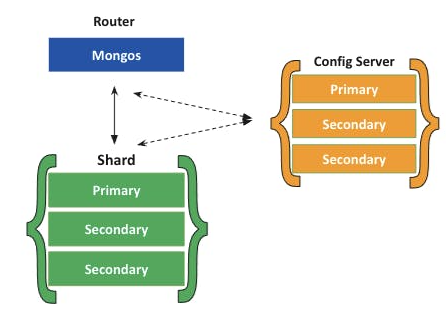
16. What are Transactions?
Ans:
A transaction is the logical unit of processing in the database that includes one or more database operations, which can be read or write operations. Transactions provide a useful feature in MongoDB to ensure consistency. MongoDB provides two APIs to use transactions.
Core API: It is similar syntax to the relational databases (e.g., start_transaction and commit_transaction)
Call-back API: This is a recommended approach to using the transactions. It starts transaction, executes the specified operations, and commits.
17. What is the Aggregation Framework in MongoDB?
Ans:
The aggregation framework is the set of analytics tools within MongoDB that allow you to do analytics on documents in one or more collections. The aggregation framework is based on the concept of a pipeline. With an aggregation pipeline, take input from a MongoDB collection and pass documents from that collection through the one or more stages, each of which performs a different operation on its inputs. Each stage takes as input whatever the stage before it is produced as an output.
18. What are MongoDB Charts?
Ans:
- MongoDB Charts is the new, integrated tool in the MongoDB for data visualization.
- MongoDB Charts offers the best way to create the visualizations using data from the MongoDB database.
- It allows the users to perform quick data representation from the database without writing code in the programming language such as Java or Python.
19. Explain pipeline in the MongoDB aggregation framework.
Ans:
In MongoDB, the aggregation framework provides a powerful and flexible way to process and analyze data. The aggregation pipeline is a framework for performing data transformations using a series of stages. Each stage in the pipeline represents a specific operation or transformation applied to the input documents, resulting in a processed set of documents as output. The pipeline stages are processed sequentially, and the output of one stage serves as the input to the next.
20. What are the key features of MongoDB?
Ans:
- MongoDB is the document-oriented database that allows for a flexible and dynamic schema design.
- It supports a wide range of data types, including the arrays, embedded documents, and geospatial data.
- MongoDB provides a horizontal scaling through sharding and automatic failover through the replica sets.
- It has powerful query and aggregation capabilities, with the support for indexing and text search.
21. What is Replica Set in MongoDB?
Ans:
To keep the identical copies of data on multiple servers, use replication. It is recommended for all the production deployments. Use replication to keep applications running and data safe, even if something happens to one or more of servers.
Such replication can be created by the replica set with the MongoDB. A replica set is the group of servers with one primary, server taking writes, and multiple secondaries, servers that keep copies of a primary’s data. If a primary crashes, the secondaries can elect a new primary from amongst themselves.
22. Explain Replication Architecture in MongoDB.
Ans:
MongoDB’s replication architecture involves a primary node handling write operations and replicating changes to secondary nodes. The secondary nodes can serve read operations, providing fault tolerance. Automatic failover ensures continuous service by promoting a secondary to primary in case of primary node failure, and an oplog records chronological write operations for replication. Arbiters may be used to break ties in elections without storing data, contributing to the system’s resilience.
23. What are some utilities for backup and restore in MongoDB?
Ans:
The mongo shell does not include the functions for exporting, importing, backup, or restore. However, MongoDB has created the methods for accomplishing this, so that no scripting work or complex GUIs are needed. For this, several utility scripts are provided that can be used to get data in or out of the database in bulk. These utility scripts are:
- mongoimport
- mongoexport
- mongodump
- mongorestore
24. What is the WiredTiger storage engine in MongoDB?
Ans:
WiredTiger is a default storage engine for MongoDB as of version 3.2. It provides an efficient compression, allowing for a greater data density and reduced disk space requirements.
It also supports the document-level concurrency control, allowing for the multiple reads and writes to occur simultaneously.
25. How do you monitor the performance of MongoDB databases?
Ans:
- MongoDB provides several tools for monitoring performance, including mongostat and mongotop command-line utilities.
- MongoDB also supports the integration with the third-party monitoring tools like Datadog and New Relic.
- Important metrics to monitor include the CPU usage, memory usage, and disk I/O.
26. Difference between primary key and secondary key in MongoDB?
Ans:
In MongoDB, the primary key is automatically created on the _id field, which is unique to each document in the collection.
Secondary keys can be created on any field or combination of fields in the collection, and are used to optimize queries that filter, sort, or aggregate data.
27. What are best practices for backup and recovery in MongoDB?
Ans:
- MongoDB recommends taking regular backups and storing them off-site.
- Backups can be taken using mongodump or mongorestore utilities, or by using the third-party backup tool.
28. How do you monitor the performance of MongoDB databases?
Ans:
MongoDB provides several tools for monitoring performance, including mongostat and mongotop command-line utilities. MongoDB also supports the integration with the third-party monitoring tools like Datadog and New Relic. Important metrics to monitor include the CPU usage, memory usage, and disk I/O.
29. How can you handle concurrency in MongoDB?
Ans:
- MongoDB uses the document-level locking mechanism to handle concurrency.
- This means that only a document being modified is locked, allowing for the multiple reads and writes to occur simultaneously.
- MongoDB also supports optimistic locking through the use of $set operator with the $inc modifier.
30. What is a MongoDB query?
Ans:
A MongoDB query is the request for data retrieval from the MongoDB database. It is the command or set of commands that retrieves data from one or more MongoDB collections based on the specified criteria.
31. What security features are available in MongoDB?
Ans:
- MongoDB supports role-based access control (RBAC), which allows for a granular control over user privileges.
- It also supports the SSL/TLS encryption for data in transit, as well as authentication mechanisms like Kerberos and LDAP.
- MongoDB Enterprise Edition includes the additional security features are field-level encryption and auditing.
32. Difference between collection and document in MongoDB?
Ans:
In MongoDB, a collection is a grouping of MongoDB documents. It is roughly equivalent to a table in a relational database. Collections don’t enforce a schema, allowing documents within a collection to have different structures. A document, on the other hand, is a JSON-like BSON object stored in a collection. Each document represents a set of key-value pairs, making it the fundamental unit of data storage in MongoDB.
33. What are different types of MongoDB queries?
Ans:
find(): Retrieves documents from a collection based on the specified criteria.
aggregate(): Performs aggregation operations like grouping, sorting, and filtering data.
count(): Counts the number of the documents in collection that match specified criteria.
distinct(): Returns the list of distinct values for a given field in a collection.
text(): Performs the text search on collection.
34. What is the explain() method in MongoDB?
Ans:
The explain() method in MongoDB is used to analyze the performance of a query and provide information on how the query is executed. It returns a document that contains details on the query execution plan, including number of documents scanned, index used, and execution time.
35. What is the difference between MongoDB and MySQL?
Ans:
MongoDB is the NoSQL document-oriented database, while MySQL is the relational database management system. MongoDB does not require the predefined schema and stores data in the flexible JSON-like documents, whereas MySQL requires the predefined schema and stores data in the tables with fixed columns and rows.
36. How does MongoDB ensure high availability and fault tolerance?
Ans:
- Replica sets for an automatic failover and data redundancy.
- Sharding for the horizontal scaling and load balancing.
- Write a concern and read concern settings for controlling a data consistency and availability.
37. What is the syntax for inserting documents in MongoDB?
Ans:
To insert the document in MongoDB, use insertOne() method with the following syntax:
- db.collection.insertOne({<'field1'>: <'value1'>, <'field2'>: <'value2'>, …})
38. What is the purpose of the $group operator in MongoDB?
Ans:
The $group operator in MongoDB is used to group the documents by a specified field and perform aggregation operations on grouped data, such as summing or averaging.
39. Define BSON.
Ans:
- BSON stands for Binary JSON, which is binary-encoded serialization of JSON-like documents used in the MongoDB.
- BSON extends the JSON model by adding additional data types and optimizing for efficient data storage and retrieval.
40. What is the syntax for updating documents in MongoDB?
Ans:
To update the document in MongoDB, use updateOne() or updateMany() method with following syntax:
- db.collection.updateOne({
}, { })
- db.collection.updateMany({
}, { })
41. How does MongoDB store data?
Ans:
- MongoDB stores the data in a binary format called BSON (Binary JSON) which represents the documents as a sequence of fields and values.
- MongoDB uses a flexible schema model, which means that documents in the collection can have different fields and structures.
42. What is the syntax for deleting documents in MongoDB?
Ans:
To delete the document in MongoDB, use deleteOne() or deleteMany() method with following syntax:
- db.collection.deleteOne({
}) db.collection.deleteMany({ })
43. Does MongoDB support ACID Transaction?
Ans:
Yes, MongoDB supports the ACID transactions. ACID transactions are the set of properties that guarantee that database transactions are processed reliably.
44. What is Capped Collection and how does it work in MongoDB?
Ans:
A Capped Collection is the fixed-size collection in the MongoDB that maintains insertion order, and if the collection reaches its maximum size, it overwrites the oldest documents. It works by automatically removing older documents as new ones are inserted.
45. How can you find array elements with multiple criteria?
Ans:
You can use the $elemMatch operator in the MongoDB to find array elements with the multiple criteria. The $elemMatch operator matches the documents that contain an array field with at least one element that matches all specified criteria.
46. Differentiate between MongoDB and CouchDB?
Ans:
MongoDB is the document-oriented NoSQL database that stores data in the JSON-like documents and supports a dynamic schema design, whereas CouchDB is a database that uses the semi-structured document-oriented approach and supports the ACID transactions.
47. How can you sort user-defined functions?
Ans:
Use the sort() method in MongoDB to sort the user-defined function. For example, to calculate “x-y” and sort result in the ascending order, can use the following code:
- db.collection.find() .sort(function(a, b) { return (a.x – a.y) – (b.x – b.y); })
48. How do query nested Joins?
Ans:
In MongoDB, there is no support for nested joins. Instead, can use the $lookup aggregation pipeline stage to perform left outer join operation between two collections. The $lookup stage can be used to join the two collections based on the common field, and it can also be used to join nested arrays.
49. What extent does data expand to multi-slice?
Ans:
In MongoDB, the maximum size of a single document is 16 megabytes. However, there is no limit to the number of slices (i.e., documents) that can be stored in the single collection or database.
50. How do we retrieve MongoDB databases in Javascript Array?
Ans:
We can retrieve MongoDB databases in the JavaScript array using find() method. For example:
- db.collection.find().toArray(function(err, result) { if (err) throw err; console.log(result); });
This code retrieves all documents in the collection and returns them as an array.
51. Can we run more than one Javascript Operation in one MongoDB instance?
Ans:
Yes, MongoDB supports running multiple JavaScript operations in a single instance. MongoDB allows the JavaScript to be executed on a server-side, using the eval method or by storing JavaScript functions as strings in a database.
52. What are different storage engines used by MongoDB?
Ans:
MongoDB currently has two storage engines: MMAPv1 and WiredTiger. MMAPv1 is a default storage engine for the MongoDB versions before 3.2, while WiredTiger is a default storage engine for the MongoDB versions 3.2 and later.
53. How do you update the object in a Nested Array?
Ans:
You can update an object in the nested array using the $ positional operator in the MongoDB. The $ operator identifies an element in the array that matches the query condition. For example:
- db.collection.update( { “arrayField.objectField”: “value” }, { $set: { “arrayField.$.objectField”: “new_value” } } )
This code updates the “objectField” value in the first element of the “arrayField” array that matches a query condition.
54. How can I perform Join operations in MongoDB?
Ans:
MongoDB does not support the traditional Join operations like SQL databases, but it provides the alternative using the $lookup aggregation pipeline stage to perform a left outer join between the two collections based on the specified condition.
55. How do retrieve particular embedded documents in MongoDB collection?
Ans:
We can retrieve a particular embedded document in MongoDB collection using a dot notation. For example:
- db.collection.find({ “embeddedDocument.field”: “value” })
This code retrieves all documents that have an embedded document with a field that has a value “value”.
56. How can you configure the cache size in MongoDB?
Ans:
You can configure the cache size in MongoDB by setting the “storage.wiredTiger.engineConfig.cacheSizeGB” parameter in a configuration file or via the command line during the startup.
57. How would use MapReduce for grouping over 10000 unique keys?
Ans:
By using the version 2.2 of MapReduce for grouping. The returned array from db.collection.group() method will include up to 20,000 elements, implying up to 20,000 distinct groupings. Previous versions of the MapReduce have a total of 10,000 elements for the group by operations of more than 20,000 distinct groupings.
58. What are CRUD operations in MongoDB?
Ans:
- CRUD stands for Create, Read, Update, and Delete operations.
- In MongoDB, the CRUD operations are performed using the insert(), find(), update(), and remove() methods, respectively.
59. What is meant by NoSQL databases?
Ans:
The internet is now filled with huge data, users, complexities, etcetera, and it is also getting more nuanced by the day. NoSQL is a solution to all issues. It is not a standard database management system, nor is it a relational database management system (RDBMS). NoSQL is an abbreviation for “Not Only SQL”. NoSQL is the database that can manage and filter all the types of unstructured, jumbled and complicated data. It’s also a different way of looking at the database. MongoDB is the NoSQL (no-SQL) database.
60. What are 32-bit nuances?
Ans:
In MongoDB, “32-bit nuances” refer to limitations associated with running MongoDB on 32-bit systems. These include a maximum addressable memory of 4 GB, impacting performance with large datasets. Document and index size limits may constrain data storage and query capabilities, while limited concurrency may affect the system’s ability to handle simultaneous operations efficiently.
61. What are the various kinds of NoSQL databases?
Ans:
NoSQL databases types are include:
- Document-oriented
- Key-value
- Graph
- Column-oriented
62. What are various languages that MongoDB supports?
Ans:
MongoDB officially supports following languages: C, C++, C#, Java, Node.js, Perl, PHP, Python, Ruby, Scala, Go and Erlang. MongoDB can be used for any of the languages mentioned above. There are several other community-supported drivers, but ones mentioned above are given by MongoDB.
63. What distinguishes MongoDB as the best?
Ans:
MongoDB is regarded as strongest NoSQL database due to following characteristics:
- Document-oriented (DO)
- High performance (HP)
- High availability (HA)
- Scalability is easy
- Rich query language
64. What is the role of profiler in MongoDB?
Ans:
MongoDB provides the database profiler that displays the performance characteristics of each database process. Using this profiler, may identify queries (and write operations) that are taking a longer time than they should and use this information to determine when index is needed.
65. How does MongoDB handle transactions or locking?
Ans:
MongoDB does not use the traditional locking with reduction since its presentation is intended to be light, quick and understandable.
It can be compared to MySQL MyISAM auto entrust sculpt. Performance is improved with simplest business maintenance, particularly in the structure with several servers.
66. Can MongoDB is referred to as a schema-less database?
Ans:
Since JSON is the schema-free data system, it will be more accurate to assume that MongoDB has a dynamically typed schema. Create and insert the text to begin creating a schema. When a document is entered into a database, a corresponding collection is generated.
67. What are the distinctions between BSON and JSON documents in general?
Ans:
BSON Documents: BSON (Binary JSON) is a binary-encoded serialization format used by MongoDB to store and exchange data. While BSON shares a foundation with JSON, it introduces additional data types and features optimized for storage and processing efficiency within MongoDB.
JSON Documents: JSON (JavaScript Object Notation) is a text-based data interchange format widely used for representing structured data. It is human-readable, lightweight, and easy to parse, making it popular for data exchange between systems.
68. Does MongoDB write to disk automatically or slowly?
Ans:
MongoDB automatically writes data to disc, however the pace of the process varies depending on factors such as the kind of write operation and hardware performance. Write operations are initially saved in memory and then flushed to disc asynchronously. Factors like as data amount, disc I/O speed, and overall system load can all have an impact on speed. MongoDB’s methodology strikes a compromise between efficient write operations and system performance concerns.
69. When and to what degree does data become multi-slice?
Ans:
MongoDB scrap stands on the collection. As a result, an album containing all the substances is stored in the form of a lump or mass.
Where an extra time period is available there can be more than a few slice data accomplishment options, so when there is a more than one chunk, data is extended to the large number of slices and can be extended to 64 MB.
70. Is it essential for MongoDB to have tons of RAM?
Ans:
No, it does not. MongoDB does not need a ton of RAM to operate. It can operate on very little RAM because it dynamically allocates and deallocates the RAM based on the needs of a process.
71. What is the replication mechanism in MongoDB?
Ans:
- The process of synchronizing data through the several servers is known as replication.
- With the several copies of data on the various database servers, it offers continuity and increases data efficiency.
- Replication protects the database from the loss of a single server.
72. Describe oplog.
Ans:
The operational log (oplog) is the kind of capped collection that maintains a running record of all operations that change the data in databases. It first performs database operations on a primary, after which it logs these operations in a primary’s log. The secondary members then copy and execute operations in an asynchronous method.
73. What is the significance of the covered query?
Ans:
Since the index contains all of the fields, MongoDB will fit the question condition and return the result fields without having to search into the documents. Since indexes are contained in RAM or sequentially on disk, such access is much quicker.
74. Are null values permitted?
Ans:
Yes, it’s only for members of an object. Since a null is not an object, it cannot be attached to a database collection. However, {} can be added.
75. What is the Shard Key in MongoDB?
Ans:
The shard key, which controls how evenly a collection’s documents are distributed throughout a cluster’s shards, can either be a single indexed field or several fields covered by the compound index. The optimum shard key enables the MongoDB to support common query patterns while distributing the documents uniformly across the cluster.
76. Explain Journaling in MongoDB.
Ans:
Journaling is the temporary storage that keeps write operation logs in a journaling subdirectory created by MongoDB on a machine until it gets flushed to the core data directory.
So, instead of a MongoDB immediately writing data to disk, it logs the write operation and index modifications in an on-disk journal file first, then writes its core data directory on an interval basis.
77. What is GridFS in MongoDB?
Ans:
- GridFS is the MongoDB file system specification for dealing with the large files that exceed the document size limit of 16MB, such as images, audio, files, video files, etc.
- GridFS can store and retrieve large files by breaking them into chunks and holding each in a separate document.
78. What is “Namespace” in MongoDB?
Ans:
MongoDB stores the BSON (Binary Interchange and Structure Object Notation) objects in the collection. The concatenation of collection name and database name is called namespace
79. What are the alternatives to MongoDB?
Ans:
- Cassandra
- CouchDB
- Redis
- Riak
- Hbase
80. Difference between MongoDB and Redis database?
Ans:
- Redis is faster than MongoDB.
- Redis has key-value storage whereas MongoDB has document type storage.
- Redis is hard to code but MongoDB is easy.
81. What is the difference between MongoDB and Cassandra?
Ans:
MongoDB is the cross-platform document-oriented database system while Cassandra is a high performance distributed database system. MongoDB is written in the C++ while Cassandra is written in Java.
MongoDB is simple to administer in the case of failure while Cassandra provides the high availability with no single point of failure.
82. What is a compound index in MongoDB?
Ans:
In MongoDB, a compound index is an index that includes more than one field. By including the multiple fields in an index, can optimize queries that filter, sort, or aggregate data based on the combinations of those fields.
83. What is cursor in MongoDB?
Ans:
In MongoDB, cursor is a pointer to the result set of the query. When querying a MongoDB collection, the result is returned as a cursor object. Cursors allow iterating over the result set one document at a time, and provide a way to efficiently retrieve the large result sets without loading the entire result set into the memory at once. Cursors are iterable and can be used with the forloop or forEach() method to iterate over documents in the result.
84. How do you choose shard key in MongoDB?
Ans:
- When choosing the shard key in MongoDB, it’s important to consider distribution of data and how it will be queried.
- The ideal shard key should distribute data evenly across the shards and be used in the frequent queries.
85. What is read preference in MongoDB?
Ans:
A read preference in MongoDB is a setting that determines how MongoDB clients route read operations to nodes in a replica set. By default, read operations are directed to a primary node, but read preference options can be used to control behavior for different use cases.
86. What is the difference between standalone and replica sets in MongoDB?
Ans:
In MongoDB, standalone deployment consists of a single mongod instance running on a single server, while a replica set deployment consists of multiple mongod instances running on multiple servers.
Replica sets provide a high availability and data redundancy by replicating data across the multiple nodes, while standalone deployments do not provide features.
87. What is TTL index in MongoDB?
Ans:
- A TTL (Time-To-Live) index in the MongoDB is a special type of index that automatically removes the documents from a collection after a certain period of time.
- A TTL index is created by adding the special field to the collection that represents expiration time of a document, and then creating an index on that field with the TTL value.
88. What is the significance of the ObjectId in MongoDB?
Ans:
The ObjectId is a 12-byte identifier assigned to each document in MongoDB. It consists of a timestamp, machine identifier, process ID, and a random incrementing value. The timestamp ensures chronological ordering, while the random increment helps avoid conflicts in distributed systems.
89. Explain the difference between the ‘$push’ and ‘$addToSet’ operators in MongoDB.
Ans:
Both operators are used to modify arrays in MongoDB. ‘$push’ adds a specified value to an array, even if it already exists, allowing duplicates.
On the other hand, ‘$addToSet’ adds a value to an array only if it doesn’t already exist, preventing duplicates. The choice between them depends on whether duplicates are allowed in the array.
90. How does indexing improve MongoDB query performance?
Ans:
Indexing in MongoDB improves query performance by allowing the database to locate and retrieve documents more efficiently. MongoDB supports various types of indexes, including single field indexes, compound indexes (on multiple fields), text indexes, geospatial indexes, and hashed indexes.



